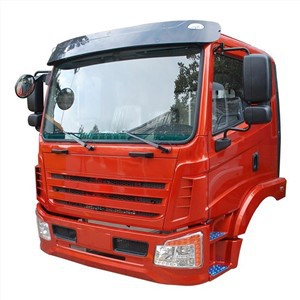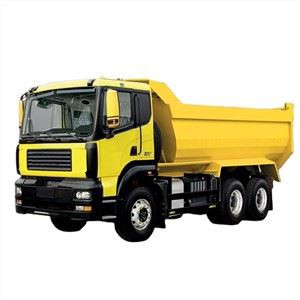Understanding Semi HP: A Comprehensive Guide
Introduction
The term “semi HP” has gained traction in various industries, particularly in automotive and power generation sectors. This article aims to dissect the concept, covering its meaning, applications, advantages, and key considerations. Whether you’re a casual reader or an industry professional, this guide will provide valuable insights into semi HP and its significance in today’s landscape.
What is Semi HP?
Semi HP, short for “semi horsepower,” refers to a range of power outputs, typically ranging from 0.5 to 5 horsepower (HP). This rating is most commonly seen in electric motors, appliances, and machinery. Understanding semi HP is crucial for selecting the appropriate equipment for various applications in homes, industries, and commercial establishments.
History and Evolution of HP Ratings
The horsepower unit was developed in the late 18th century by James Watt. It measured the power output of steam engines. As technology progressed, the need for precise power measurements in smaller machines became evident, giving rise to the semi HP category.
Applications of Semi HP
Semi HP motors and machinery are widely used in various areas, such as:
- Industrial Equipment: Pumps, conveyor belts, and fans.
- Household Appliances: Washing machines, refrigerators, and air conditioning units.
- HVAC Systems: Heating and cooling systems for commercial and residential buildings.
- Automotive: Engine ratings for smaller vehicles.
Advantages of Semi HP Systems
Semi HP systems offer numerous advantages across different applications, including:
1. Energy Efficiency
Semi HP motors are known for their energy-saving capabilities. They require less electricity compared to higher HP motors, which translates to reduced operating costs.
2. Versatility
Due to their varied power output, semi HP motors can be utilized in both light and heavy applications, making them a versatile choice in many settings.
3. Compact Size
Generally, semi HP devices are smaller and lighter than their higher horsepower counterparts, allowing for ease of installation and operation.
4. Lower Maintenance Costs
With fewer complexities and simpler designs, semi HP systems often require less maintenance than more powerful machinery, leading to lower overall costs.
Choosing the Right Semi HP Equipment

Selecting the right semi HP equipment entails considering various factors that ensure efficiency and effectiveness. Here are key points to guide your choice:
1. Understanding Your Needs
Evaluate the specific power requirements of your application to determine the appropriate horsepower rating. For instance:
| Application | Recommended Semi HP Rating |
|---|---|
| Small Pump | 1.0 – 2.0 HP |
| HVAC Fan | 1.5 – 3.0 HP |
| Washing Machine | 0.5 – 1.5 HP |
2. Efficiency Ratings
Select equipment with high-efficiency ratings (such as NEMA premium efficiency) to maximize energy savings and minimize costs in the long run.
3. Cost Considerations
Calculate both initial purchase costs and long-term operational expenses, including energy consumption and maintenance, to make an informed decision.
4. Brand Reputation
Research manufacturers and brands that specialize in semi HP equipment to ensure you’re investing in durable and high-performance products.

Installation and Maintenance Tips for Semi HP Systems
To ensure optimal performance, proper installation and maintenance are essential. Here are several tips:
1. Professional Installation
Where possible, hire qualified professionals for installation to reduce the risk of operational issues later on.
2. Regular Maintenance Schedule
Create a routine inspection and maintenance schedule that includes lubricating moving parts, checking for wear and tear, and ensuring electrical connections are secure.
3. Monitoring Performance
Implement monitoring tools to track performance metrics, which can identify potential issues before they become significant problems.
4. Keeping it Clean
Ensure that the motor and surrounding areas are clean and free from debris, which can lead to overheating and decreased efficiency.
Case Studies: Real-World Applications of Semi HP
To better illustrate the utility of semi HP systems, consider the following real-world applications:
1. Industrial Pumping Solution
A manufacturing plant replaced its outdated 3 HP pump with a new semi HP pump rated at 2 HP. As a result, they reduced energy consumption by 25%, saving thousands annually while maintaining output quality.
2. Residential HVAC Upgrade
A homeowner upgraded their HVAC system to a semi HP model, decreasing monthly electricity bills by 15% while improving air quality due to enhanced filtration systems.
3. Small Business Refrigeration
A local grocery store switched to a semi HP compressor for its refrigeration units. The improved energy efficiency led to a 20% reduction in overall operating costs, allowing the owner to allocate funds to other areas of the business.
Future Trends in Semi HP Technology
The semi HP sector is evolving alongside technological advancements, particularly in energy efficiency and smart technology. Here are some trends to watch:
1. Smart Motor Solutions
Integration of IoT technologies will allow for remote monitoring and control of semi HP systems, optimizing performance and maintenance.
2. Enhanced Energy Efficiency Standards
Regulatory bodies are increasingly imposing stricter energy efficiency standards, pushing manufacturers toward innovations that improve performance.
3. Eco-friendly Materials
Manufacturers are exploring the use of sustainable and recyclable materials in semi HP machinery, aligning with global sustainability goals.
FAQs About Semi HP
1. What determines the horsepower rating of a motor?
The horsepower rating of a motor is determined by its torque output and operating speed. These factors dictate how effectively the motor can perform work.

2. Can I use a semi HP motor for high-load applications?
While semi HP motors are ideal for moderate loads, using them for high-load applications can lead to inefficiency and potential damage. It’s important to select a motor that meets the specific requirements of your application.
3. Are semi HP systems more cost-effective than higher HP systems?
Yes, generally, semi HP systems incur lower initial and operational costs due to their energy efficiency and lower maintenance needs.
4. How can I improve the efficiency of my semi HP equipment?
Regular maintenance, proper installation, and the use of efficiency-rated products can significantly enhance the performance and longevity of semi HP equipment.
5. Is there a difference between horsepower and kilowatts?
Yes, horsepower is a measurement of power equal to about 746 watts. Kilowatts (kW) are another unit of power, where 1 kW equals roughly 1.341 HP.
6. What industries benefit most from semi HP technology?
Industries such as manufacturing, HVAC, automotive, and residential applications benefit greatly from semi HP technology, given its versatility and efficiency.
